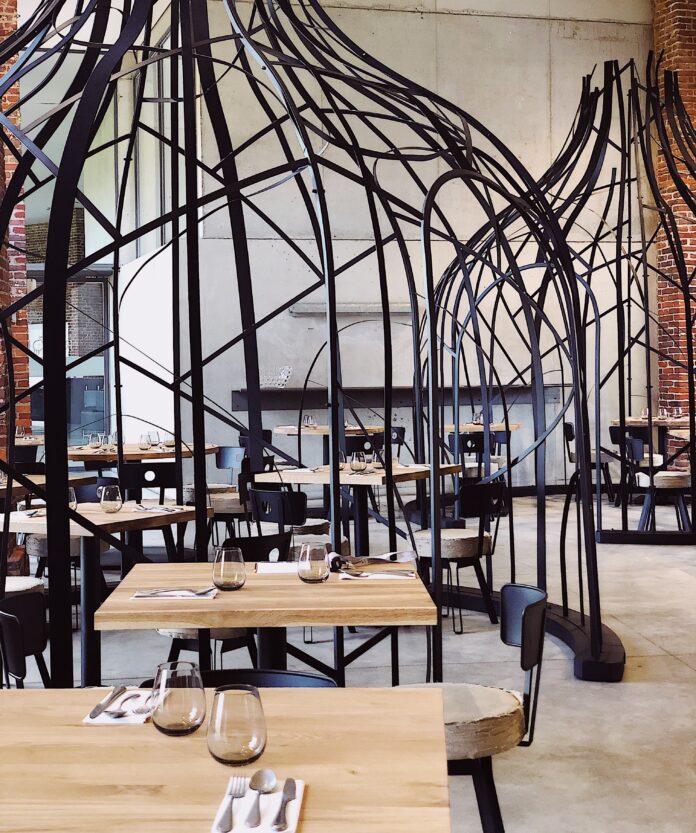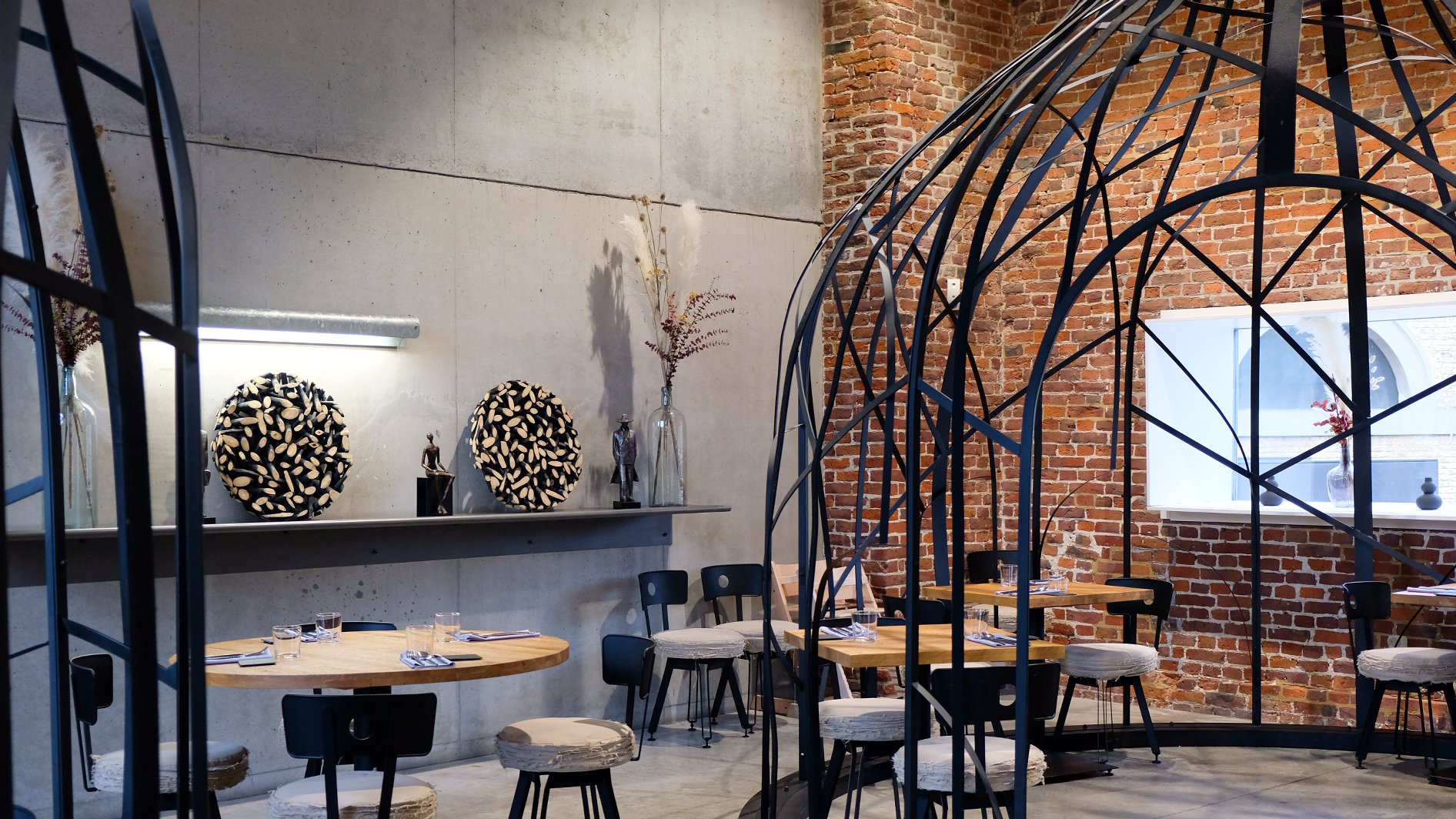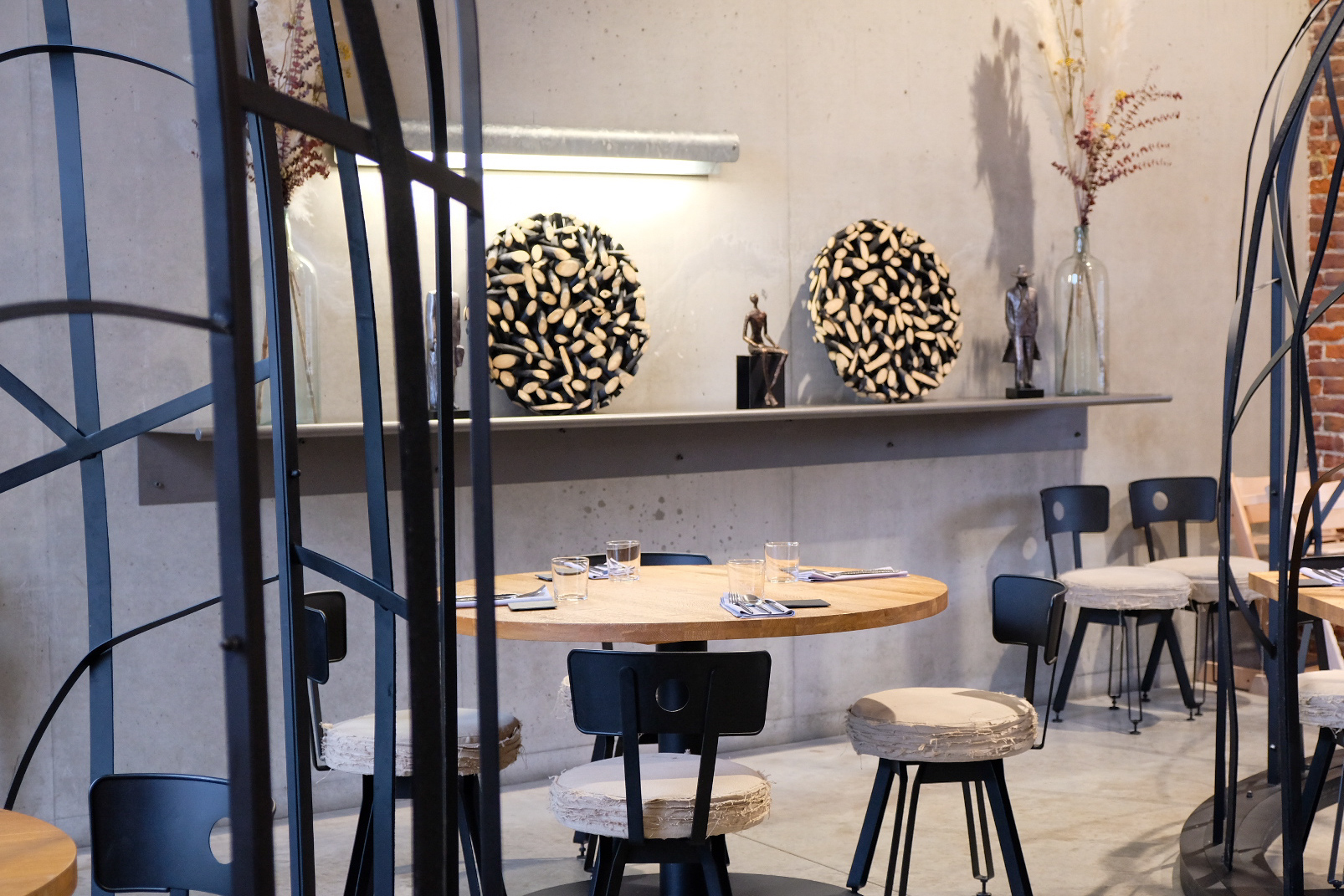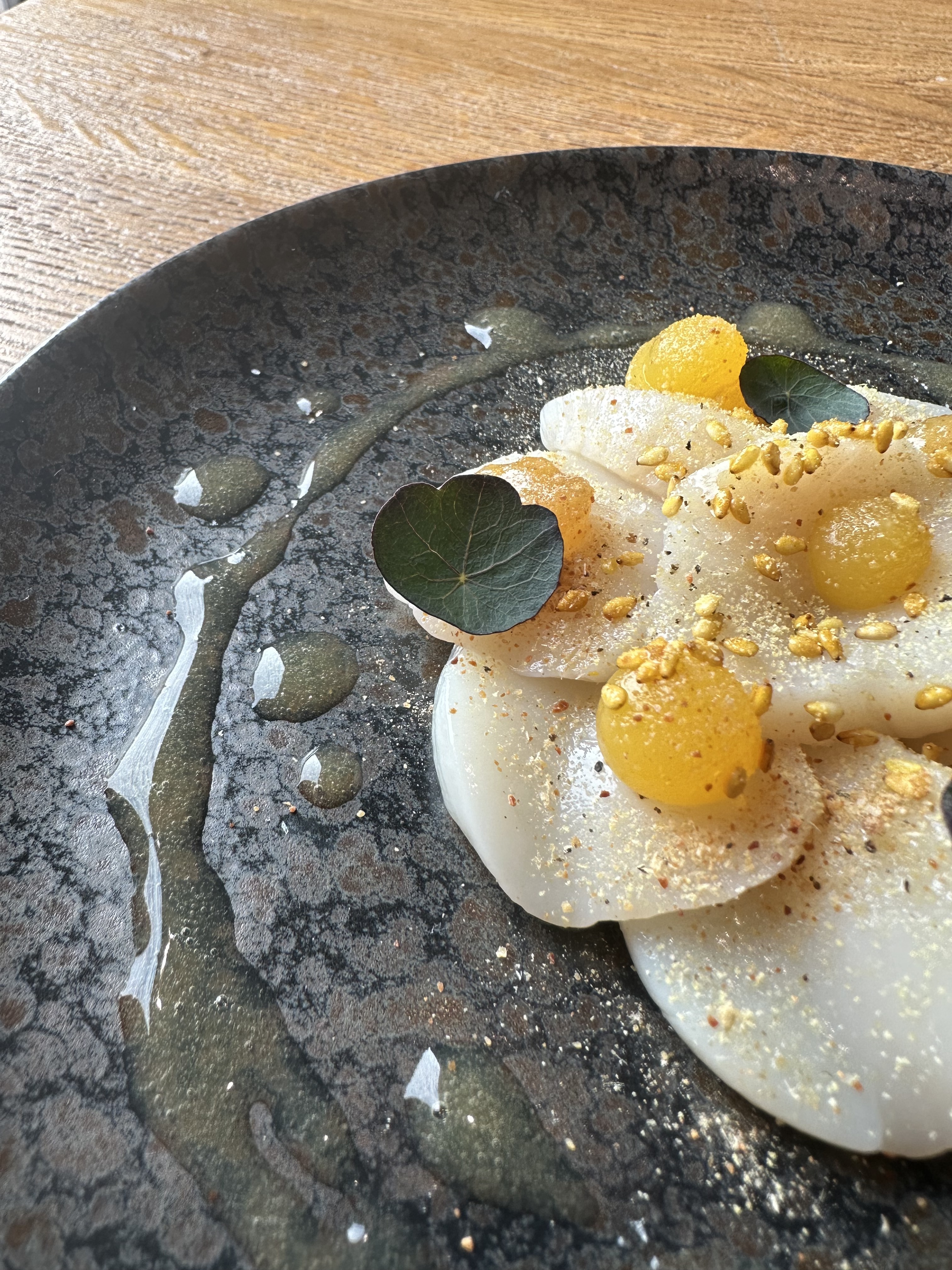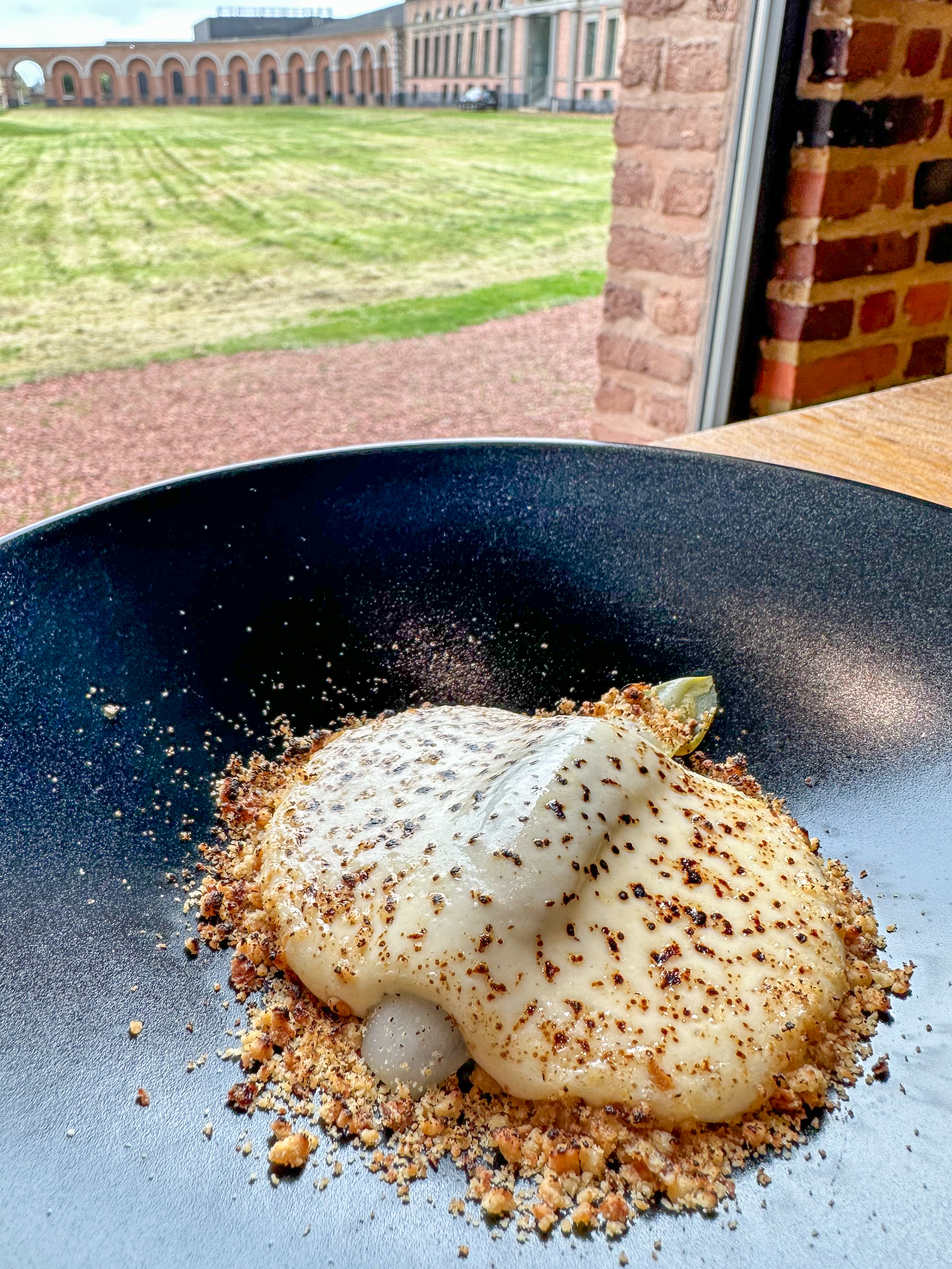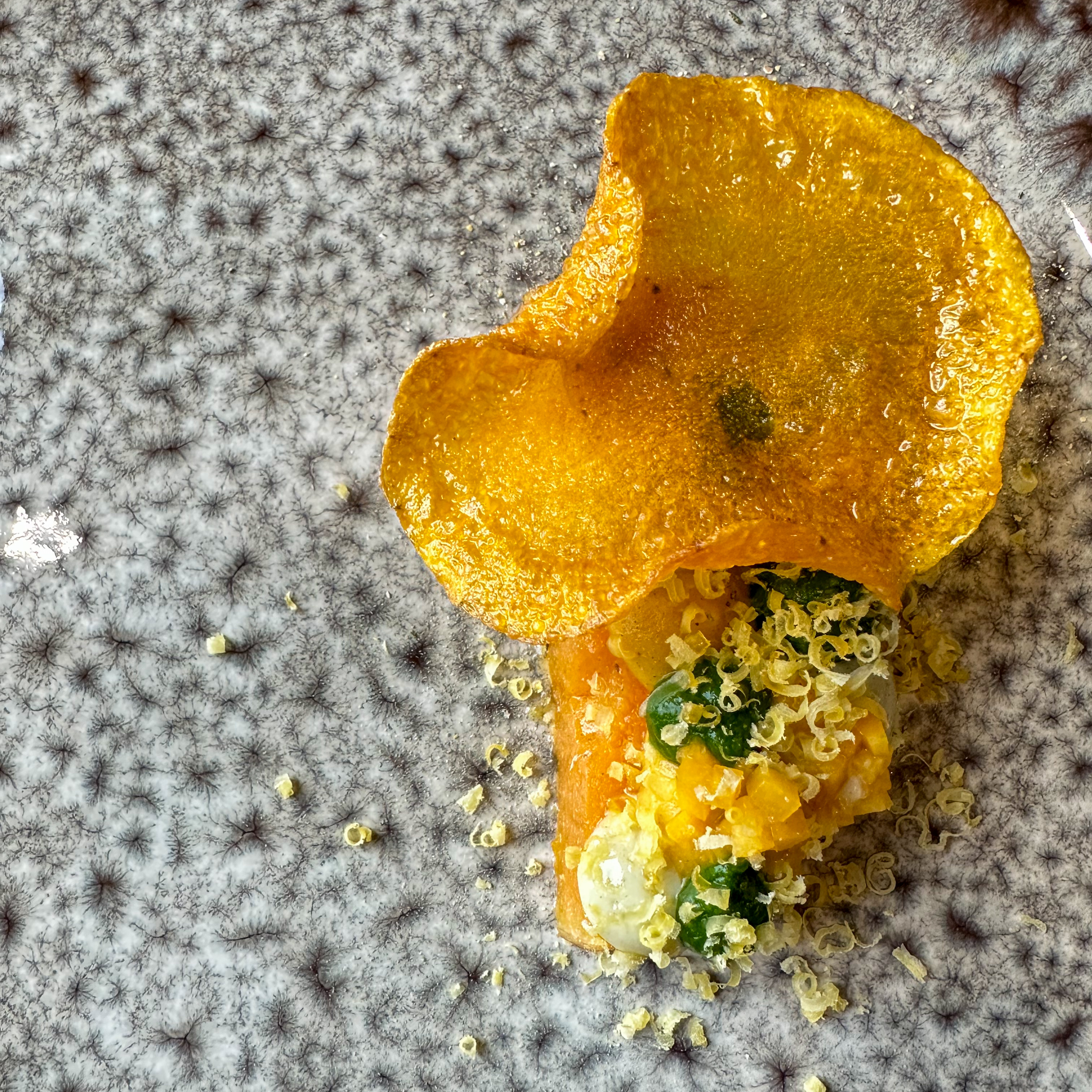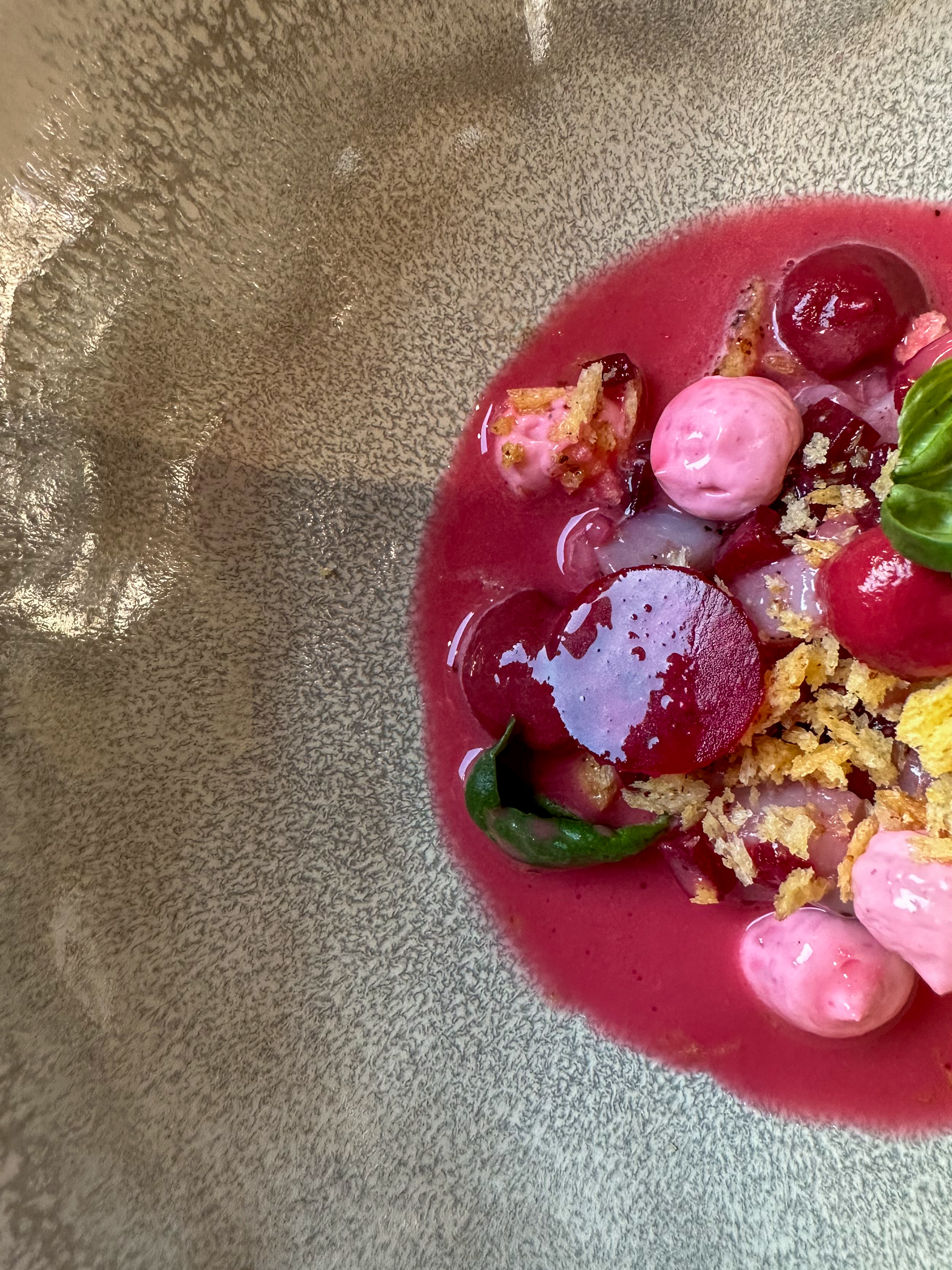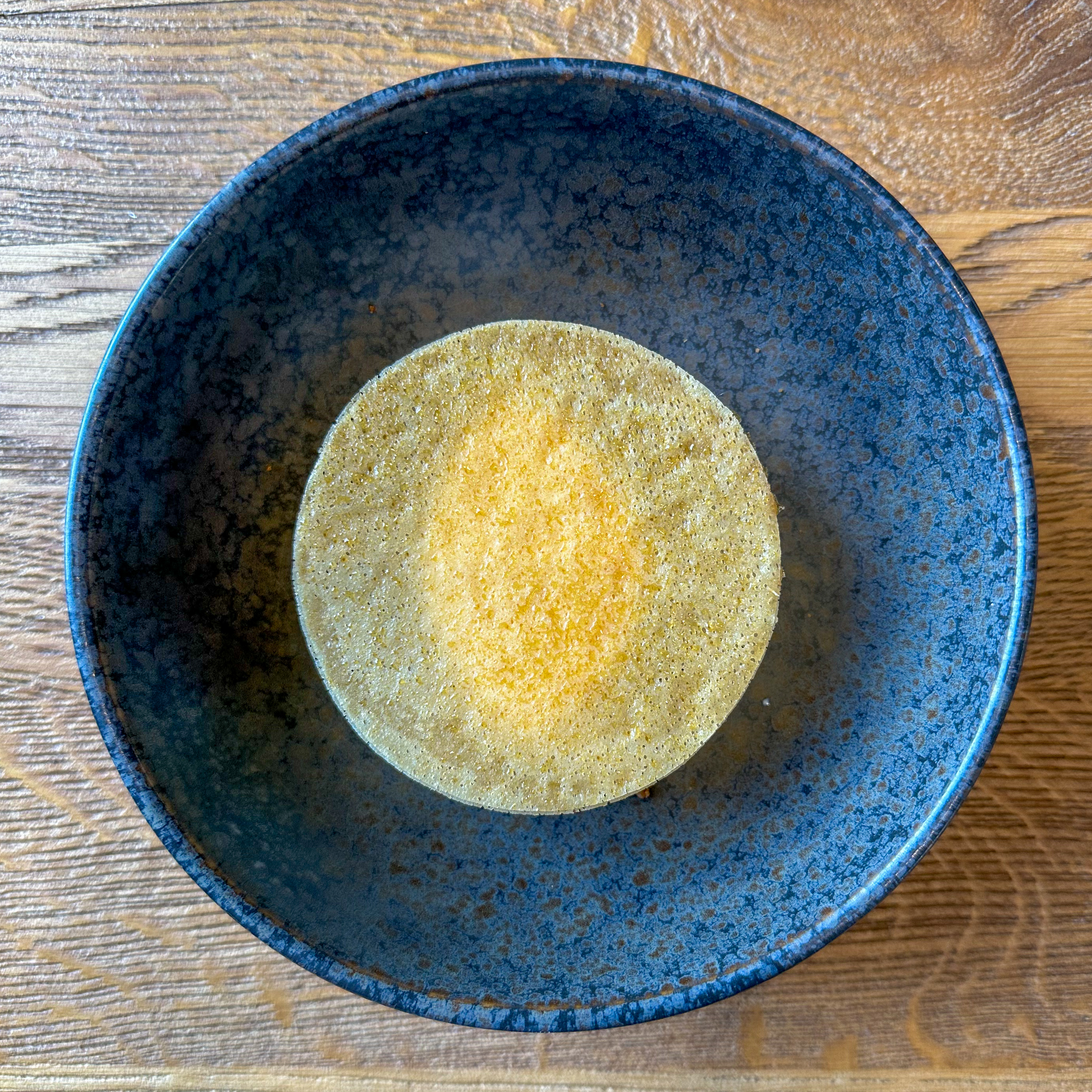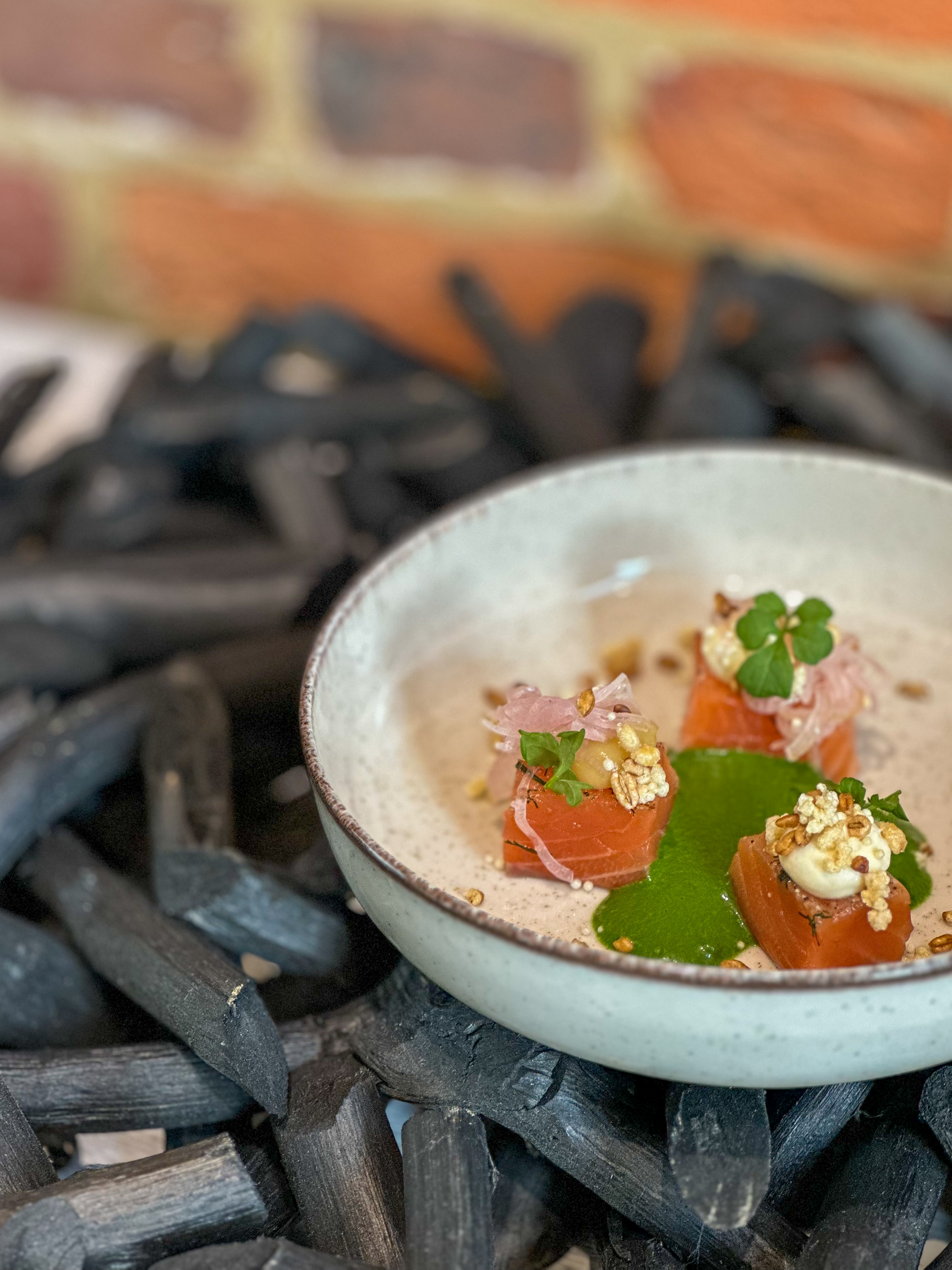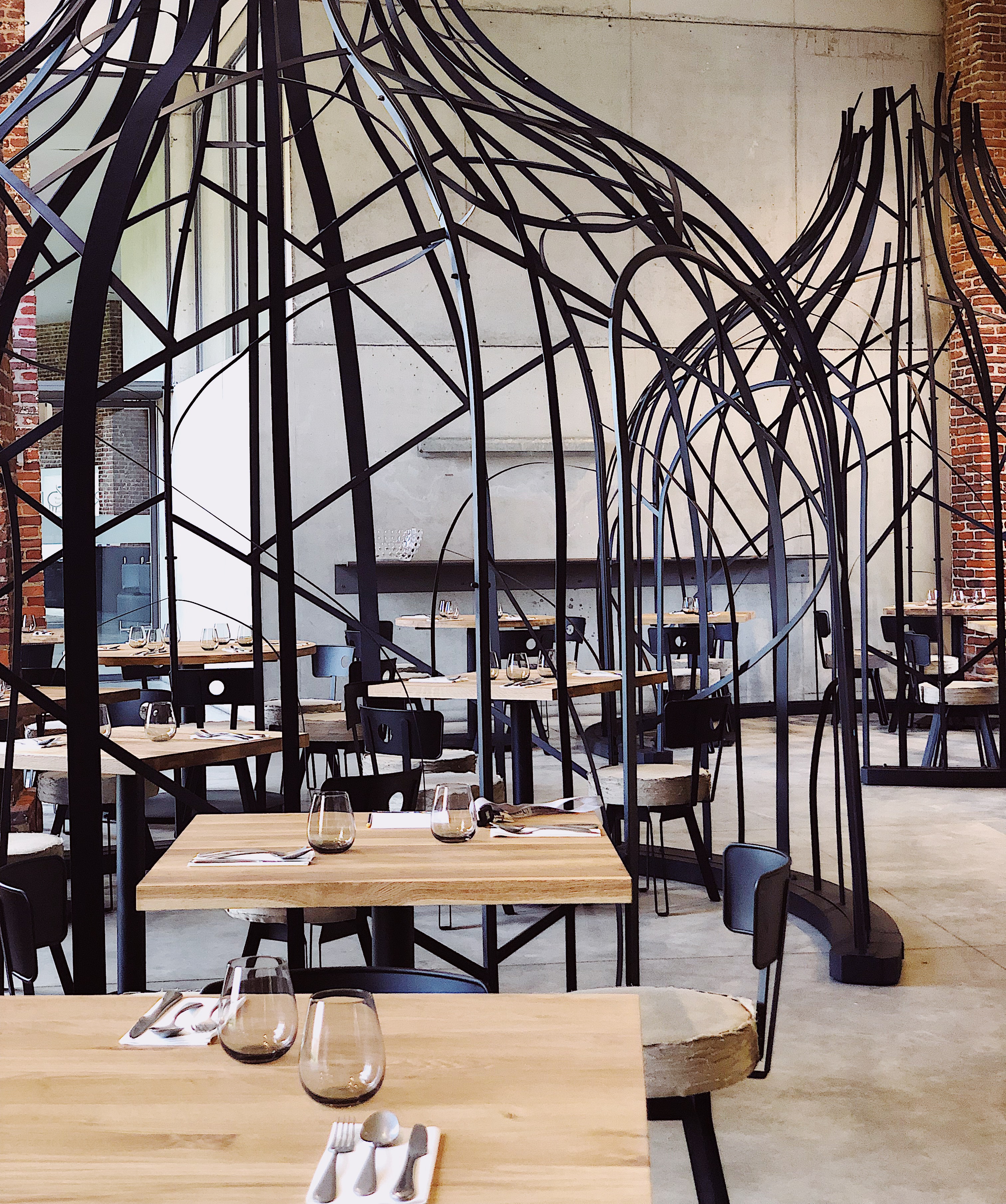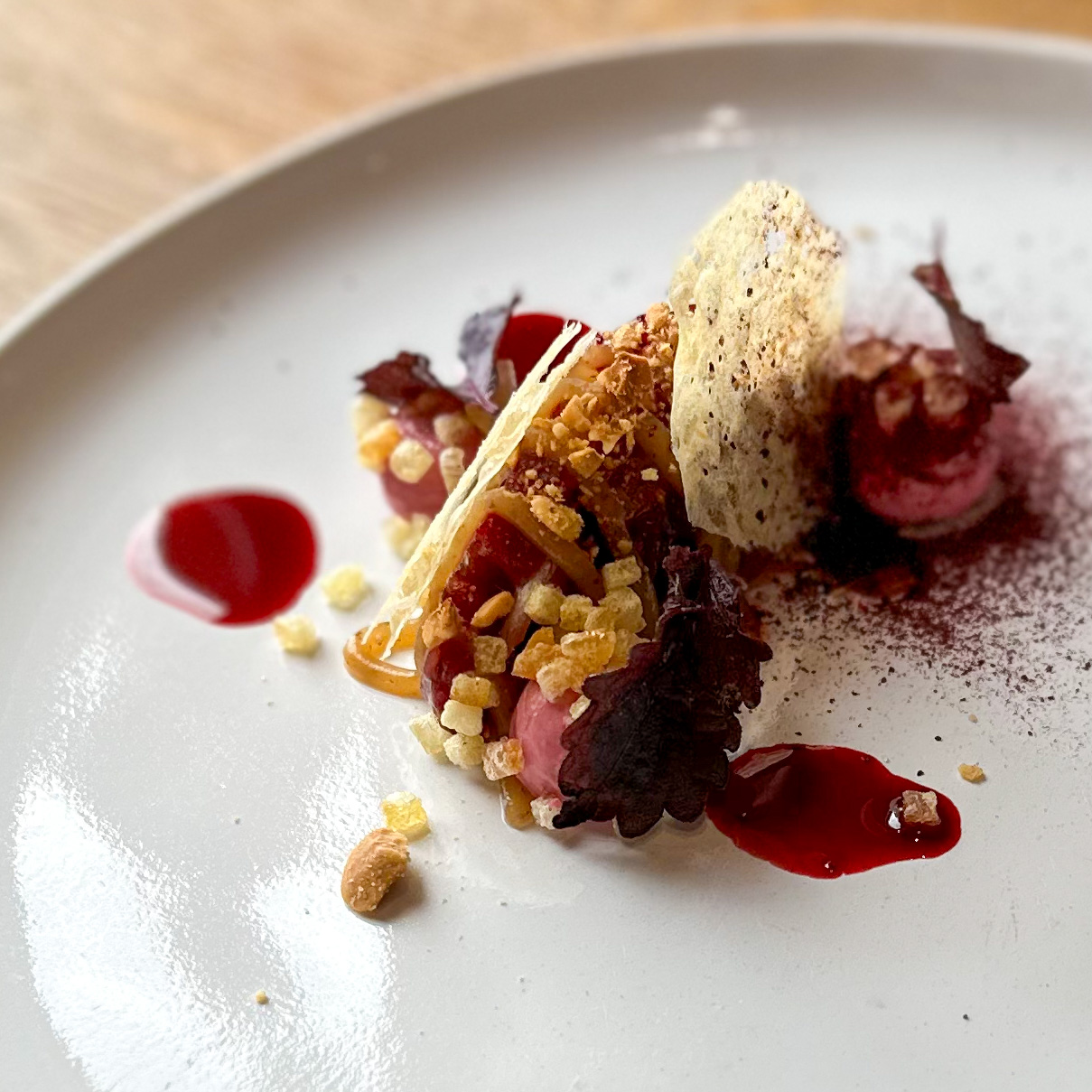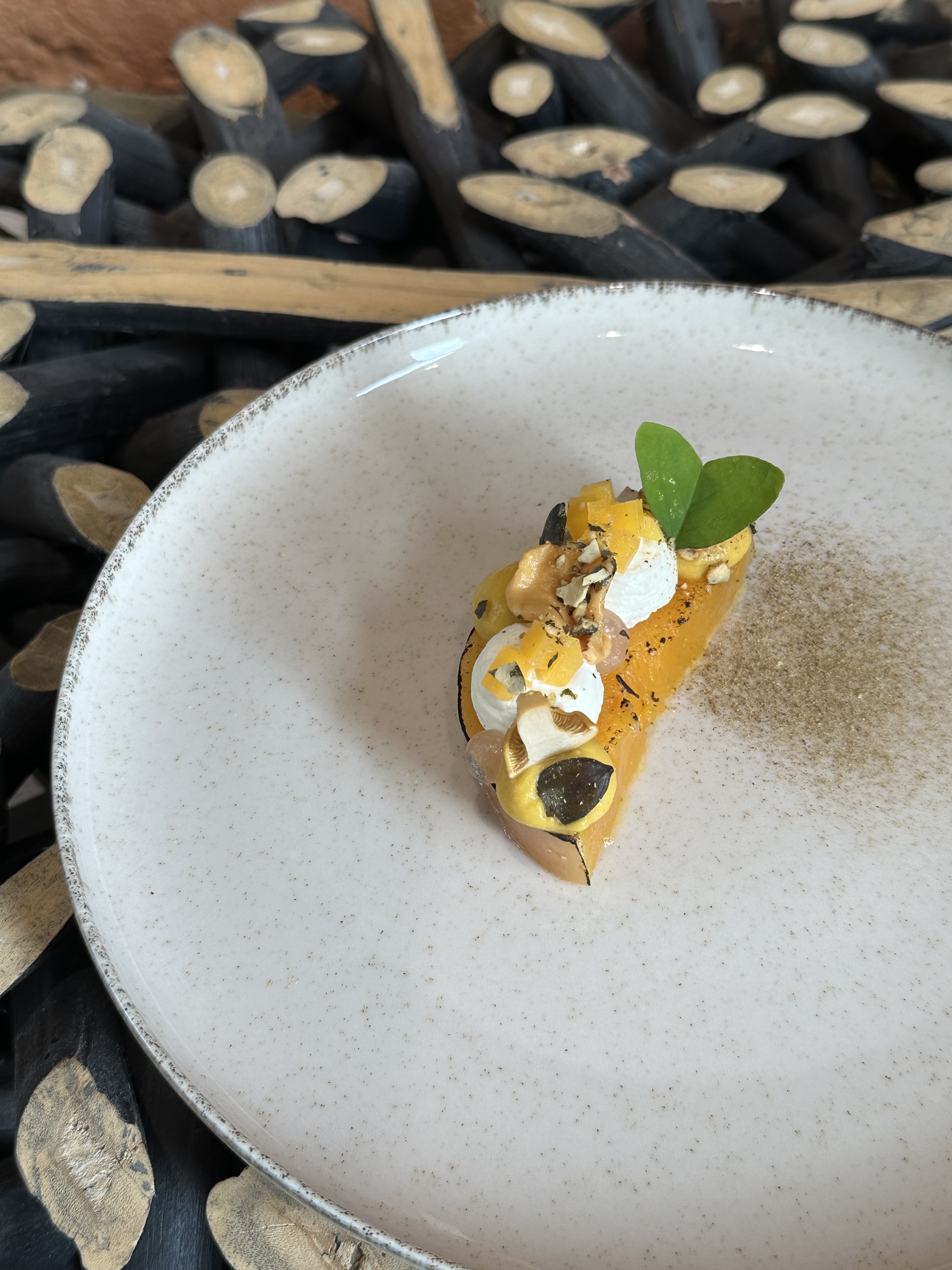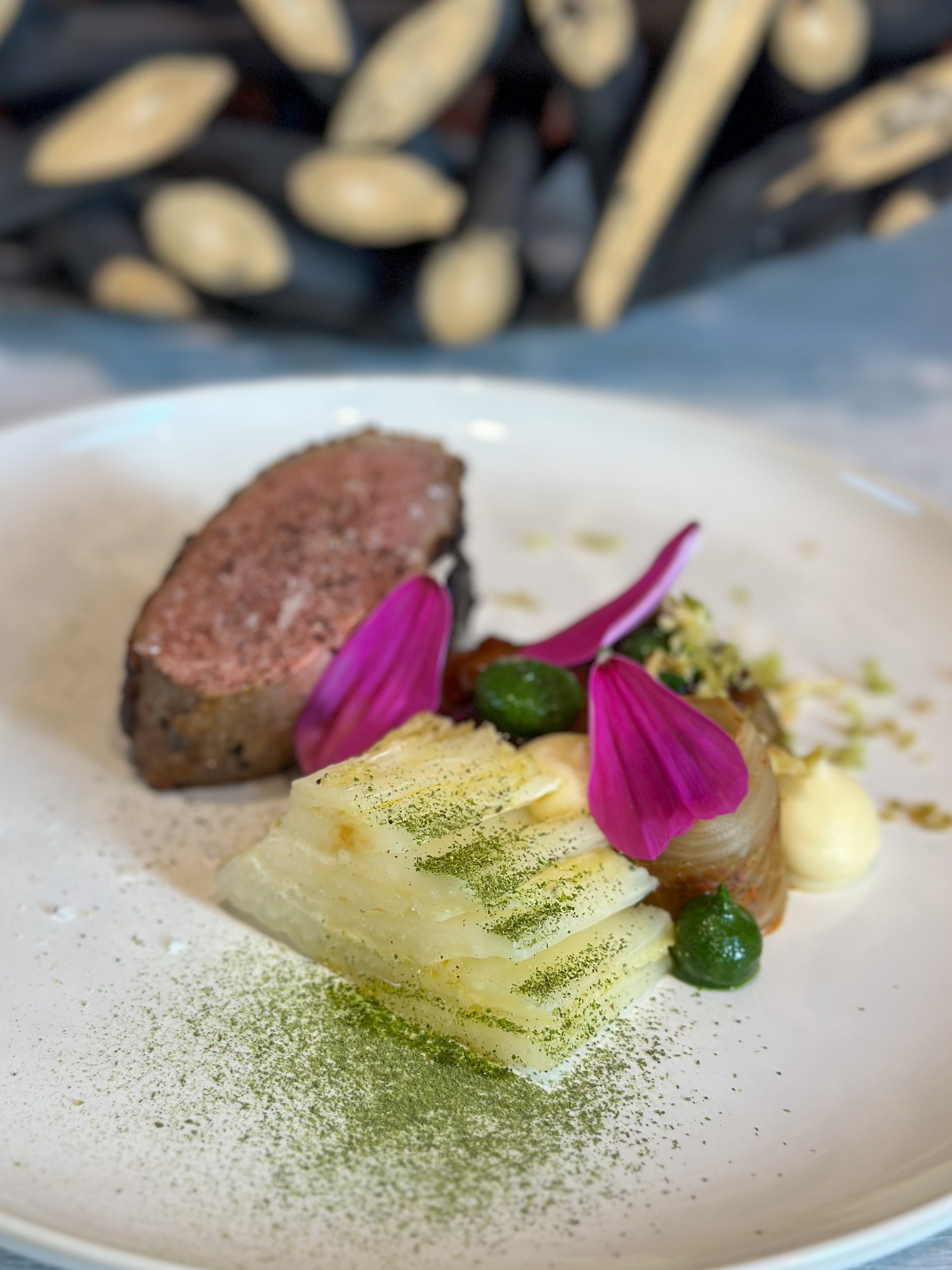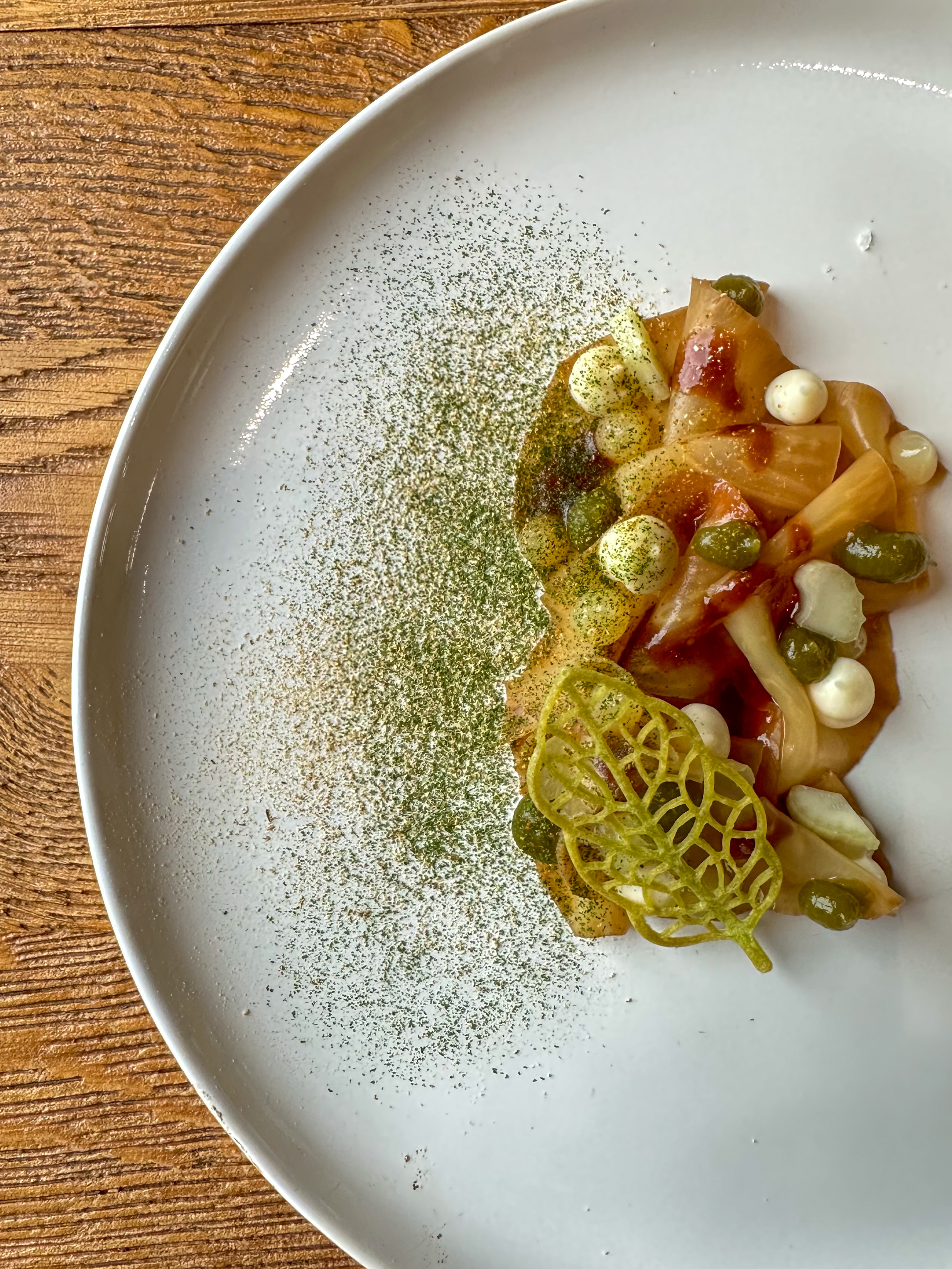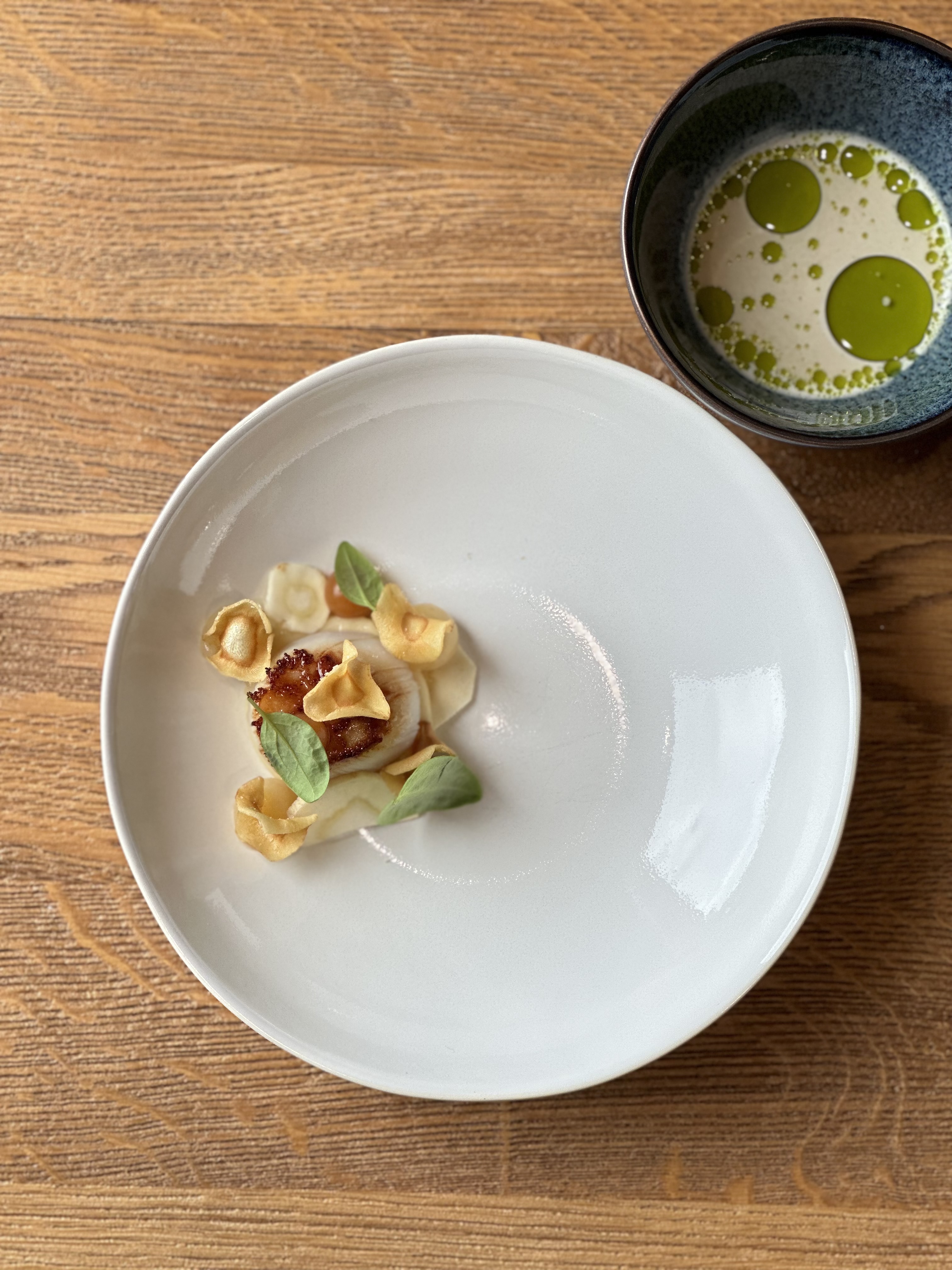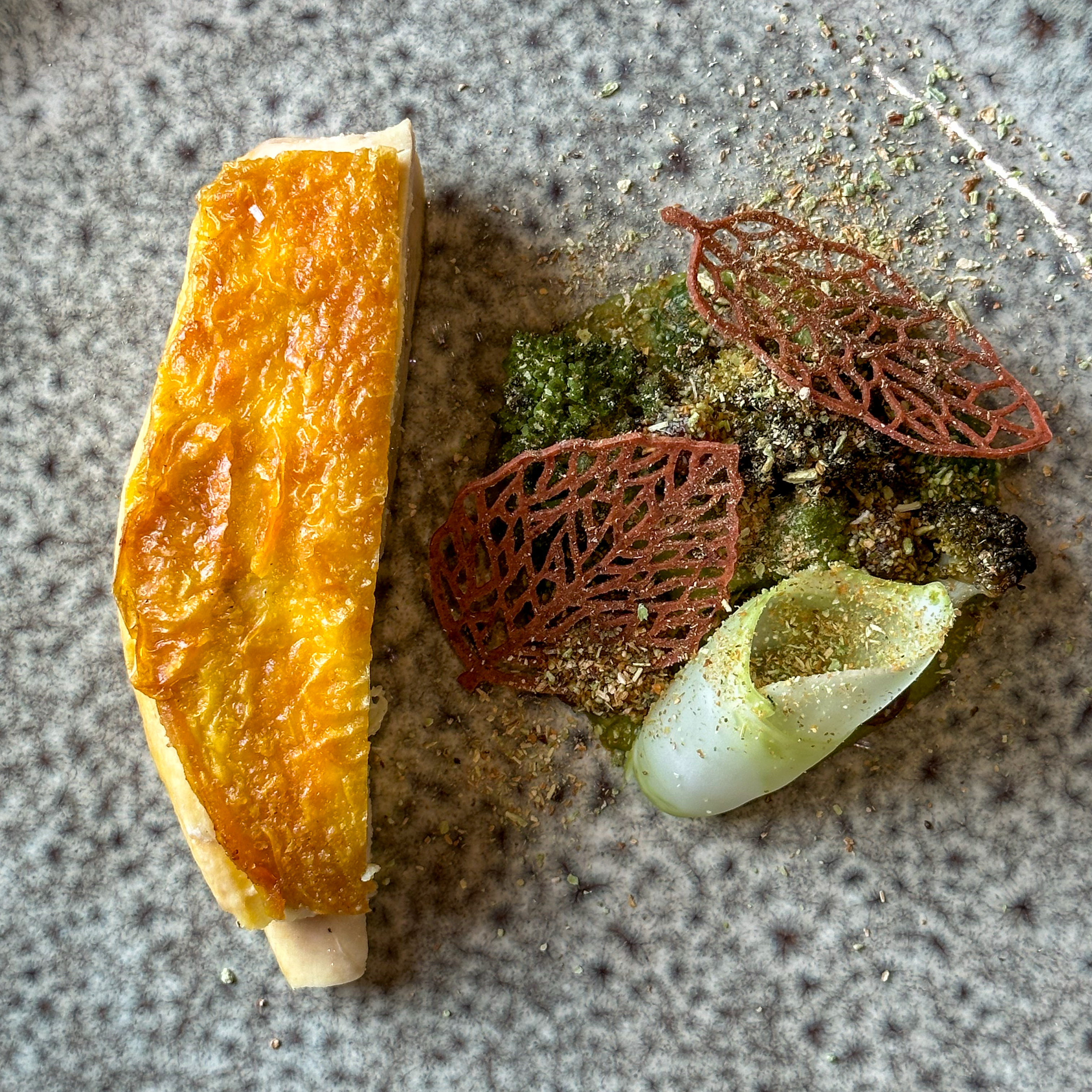Catherine Feore visited this unique restaurant in a unique location
When Olivier De Vreindt originally moved to Rizom, it was at the request of Sang Hoon Degeimbre – the renowned chef and owner behind the two-Michelin starred L’air du temps, near Namur. De Vreindt had worked with Degeimbre for five years and accepted the offer. He tells me that once he arrived, “it was love at first sight”. In the last two years he has become the owner and made it his own.
“It was love at first sight”
Originally from Brussels he was won over by the warmth of the “amazing” people of Mons. Just as rhizomes become embedded in the ground sending out a complex labyrinth of roots and upward shoots, Rizom is very much embedded in the Grand Hornu, a monumental Neoclassical complex built in the 19th century. The building is among a handful of industrial sites recognized by UNESCO as a World Heritage Site. It is one of the earliest examples of a ‘company town’. Built between 1810 and 1830 by French industrialist Henri de Gorge, it fell into disrepair, until architect Henri Guchez came to its rescue in 1971. Since then it has gradually been revived, today the building houses the Wallonia-Brussels museum of contemporary art – MAC – Musée des Arts Contemporains, and the Centre for Innovation and Design – CID.
The restaurant − and cafeteria − located in the heart of Grand-Hornu, offers local cuisine inspired by local producers, seasonal produce, and zero waste techniques. De Vriendt is a strong advocate of responsible gastronomy: “Maybe 85% of the products we use are produced locally.” I notice that there are large jars of fermenting vegetables and fermented ingredients feature on the menu, De Vreindt explains this helps them with their commitment to seasonal local ingredients, by doing a lot of fermenting and conservation they can maintain a wide range of flavours: “For example, I love the combination of raspberries and scallops, but they are from different seasons. I don’t want to buy fresh raspberries in winter so I ferment them, these are some I fermented two years ago.”
“Inspired by local producers, seasonal produce, and zero waste techniques”
An unusual feature of the restaurant is that it is only open on two evenings, on Thursday and Friday. This seems like a very humane way to run a restaurant. I sometimes wonder how people who work in restaurants maintain their work/life balance, De Vriendt says: “Maybe I will make a little less money in my lifetime, but I will have a real life and be able to spend time with my family and my friends. Most of all it is for my workers, I want to give them a life too.”
For the evening meal you can choose four, five or seven small plates from an eclectic field: Saint Jacques, with fermented raspberries and beetroot; Fenouil and coconut; Gravlax, parsley and cereales; Butternut squash, salad leaves and bacon; Radish, charcuterie of veal and rose
Volaille, romanesco, broccoli and miso; Citrus fruits, fromage frais and honey. For lunch there is a three plate option.
If you’re visiting Grand Hornu and haven’t got the time for lunch – which would be very regrettable! – you can visit the Riz-Home boutique (located to the left wing of the restaurant), here you can find a selection of Belgian products to take away.
www.rizom-restaurant.be


